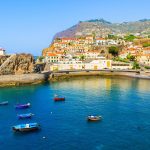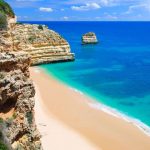Portugal poised to capitalise on growing trend for branded residences
The branded residences sector has grown 170% over the past 10 years with 590 schemes worldwide representing 76,000 units, with 10 countries planning to receive their first branded residences project over the next four years. Offering a 31% average premium, it’s a winner for buyers, brands and developers say Savills experts.
By Chris Graeme
Last year, despite the Covid-19 pandemic, was a record year for the branded residences segment worldwide, with over 100 schemes launched and the market expected to grow with brands like Four Seasons, Bvlgari, Fendi, Ritz Carlton, St Regis and Yoo leading the way from the 130 or so brands involved.
But what exactly is a branded residence? A branded residence is a residential property product that is sold on the open market and is affiliated to a known brand – such as a hotel brand – and is a structured partnership between a developer and that brand, with the band managing and servicing, but not selling or marketing, the high-quality properties through various types of rental programmes.
For the buyer it provides assurance of the quality of the product, management, services and amenities, as well as a capital investment and guaranteed yield; for the developer, it is a way of increasing sales revenues, both in terms of absolute sales prices and absorption; while for the brand, it is about customer outreach and relationships, but also there are significant financial benefits in terms of the fees which go to the brand concerned.
Huge potential
In Portugal, the potential is enormous, but it is important to understand the fundamentals of the market to attract renown international operators and brands in order to be successful.
In 2018, Savills produced an international benchmarking study analysing nine countries, including Portugal, and 26 resorts. The study commissioned by APR (The Portuguese Resorts Association) and co-financed by COMPETE, remains singular in scope and detail and is a valuable tool for members and stakeholders.
Riyan Itani, an award-winning thought pioneer in the luxury branded residential sector, with a client base of hoteliers, lifestyle brands, developers, investors and resort owners – some of which are in Portugal – has been with Savills since 2004 and is currently director of Global Residential Development.
“With a banded residence you are able to develop the residential properties while you are building the hotel (often adjacent and part of the development) and can sell those properties ‘off plan’ before the hotel opens, and then, during the process of the hotel stabilising revenue wise, you are selling that real estate with a ‘bump’ in prices when the hotel opens,” says Itani who adds that later the hotel can be sold on along with the management of the residences. Overall the cashflow profile is more lucrative than a traditional hotel model.
In 2020 Marriott was top of the league table in terms of players with a wealth and variety of brands that can be deployed in many different locations, followed by Yoo, a design-led non-hotel brand in second place, and Four Seasons in third place, with Accor jumping from sixth place in 2015 to a projected second place next year because they have 60 developments globally due to come on line.
Shift in trends
In terms of trends, there is a shift away from luxury brands towards non-luxury (23%) which is due to increase to around 31%. The main players are Westin by Marriott, Hilton, Swissotel and Mgallery by Accor.
In the non-hotelier but lifestyle market, the projects are dominated by design brands, generally interior and architecture-led design brands followed by fashion, golf and automotive, but a lack of technology or food and beverage brands.
Portugal in the spotlight
Paula Sequeira, Head of Consultancy for Savills in Portugal on the Portuguese perspective of branded residences says that Portugal is well-placed to take advantage of the branded residences model due to market fundamentals and there are already a few schemes still being built.
“Portugal has gained worldwide visibility for various reasons, including resilience and recovery from the 2008 crisis, pre-Covid-19 sustained and stable economic growth, stable political and social climate, destination of choice for several multinational companies, home of international events (i.e. Web Summit), good healthcare systems, good climate, low cost of living, safe destination (and many other factors),” she says, not to mention a plethora of international awards and distinctions over the past five years.
Portugal is also recognised as one of the best countries to live in Europe, with several tax, investor and residency schemes with the Golden Visa and the Non-Habitual Residence scheme (NHR) perhaps the best known. There is also the D7 for people who want to live, resettle or retire in Portugal and the D2 for entrepreneurial immigrants.
Another factor for Portugal’s attractiveness for branded residences investors is that the high-end residential market in Lisbon and the Algarve has been particularly resilient in terms of demand and pricing despite the Covid-19 pandemic.
Resort locations
In Portugal, there are six branded residences, most completed or almost complete, and mainly situated in resort locations (4 in the Algarve) and urban prime areas (2 in Lisbon), with the main players being Martinhal (Elegant Group), Hyatt (United Investments Portugal), Palmares (Kronos Homes), Ombria (Pontos), W Algarve (AB Concept) and Pine Cliffs. (United Investments Portugal)
Prices for residences in Portugal start from €6,000 per m2 to €9,000 per m2. Most of them have several amenities, while the buyer profiles range from primary home seekers who want to be near work and schools, investor buyers who are yield (5%+ net) and capital growth driven and who use the property for short periods and the investor user, also seeking between 3-5% net yields, and who will use the property for 1-4 weeks per year. Then the user-investor which is yield-driven and seek 3-5% net income but will use the property between 1-6 months per year. Finally, there is the lifestyle/trophy property which is at the very top end and aimed at High Net Worth Individuals (HNWI).
Brands which use ecologically sustainable construction materials and service maintenance regarding power and water use are increasingly important for buyers says Riyan Itani, with an increasing trend for developers making sure they are developing in a sustainable way, a factor in which Portugal scores highly as a world leader in green power, waste and water management, and water efficient irrigation systems for golf courses and garden areas.
Regarding sales, the experts stress that the brands won’t sell the properties for the developer, and rather require an experienced broker or agent, with only a handful of international brokers who have the experience to do so.
Branded residences in a secondary location market in Portugal will still place a premium on location and the way the product is designed, while design and interiors brands will be consolidating their position in the market,” conclude Riyan Itani and Paula Sequeira of Savills.
This article was kindly facilitated by the Portuguese Association of Resorts (APR), a private, non-profit association for real estate promoters and other entities that offers first class products in Portugal’s resorts and residential tourism sector. It was based on an online event held on 26 January, 2021.
The APR focuses on three main activities, representing its members before the government, non-governmental institutions and the public, it helps strengthen the international competitiveness of its members and Portugal as a leading destination for residential tourism, and it produces and commissions studies, reports and other industry knowledge to benefit its stakeholders and the market.










